Audi is bringing autonomous driving ever closer to reality – it has announced that it has updated its Audi A7 piloted driving concept to be more courteous to other road users. Nicknamed ‘Jack’, the car is claimed to be able to drive more naturally, adapting to the given situation and exhibiting “social competence.”
Some of the manoeuvres learnt by ‘Jack’ include putting more space between it and a lorry when overtaking, as well as signalling upcoming lane changes using the indicators and moving closer to the lane markings first, just like a human driver would.
The car can also now judge whether to accelerate or brake when other vehicles are merging into the lane, depending on the selected driving profile and which action it senses will handle the situation in the most harmonious manner for all road users. Additionally, the navigation system can now string up a route with the most autonomous driving sections, so you can keep your hands off the wheel more of the time.
Computing these autonomous functions is the central driver assistance controller (zFAS), which uses state-of-the-art high-performance processes to evaluate signals from all sensors in real-time, creating a model of the car’s surroundings. This model is a representation of the current traffic situation, and allows the system to calculate upcoming manoeuvres in advance.
To be able to do these things, cars and infrastructure will have to be networked with common information interfaces, to maximise the benefits of autonomous driving on expressways. Hence, the German ministry of transport and digital infrastructure has announced a digital test site on the A9 autobahn to provide ideal conditions for evaluating and developing future features and concepts, together with carmakers, the IT industry and the Free State of Bavaria.
With this, Audi is able to explore the possibilities of the network between cars and infrastructure, or Car-to-X communication, in real-time and under real road conditions. For example, information on variable-message traffic signs could be transferred to the car to assist in traffic flow, and road shoulders could be temporarily opened to autonomous cars.
Car-to-Car communication, on the other hand, will allow cars travelling on the same routes to report hazards and accidents in real-time, adjusting the driving speeds of other autonomous vehicles in response. The company is currently defining and testing elements of the future 5G communications standard together with IT partners for such a system.
The infrastructure itself also plays a role. Partners for the digital test site on the A9 autobahn, for example, are going so far as testing the internal composition and modified material structure for the roadside posts to improve the reflectivity of radar waves from cars at greater distances, and studying special traffic signs that allow test vehicles to localise their positions with high precision within the lane markings.
Elsewhere, Audi is researching and developing a new test site on the redesigned Ingolstadt-Süd autobahn exit, as it believes the complexity of traffic situations increases between expressway exits and city zones. Together with the city itself, the company will be testing construction methods such as the use of different types of placement as well as sensors in intersection zones, from 2017 – with testing set to begin in 2018.
Previously, Audi has showed off its autonomous driving prowess by taking a self-driving TTS up the Pikes Peak hill climb, and demonstrating an RS7 piloted driving concept at full speed around the Hockenheim circuit in 2014 and the Sonoma Raceway last year. It has also put ‘Jack’ on the public road, travelling 885 km autonomously from Silicon Valley to Las Vegas in 2015.
Audi claims autonomous driving provides improved safety, a more efficient utilisation of transport infrastructure and more time for the driver to relax. Testing these technologies has already enabled Audi to offer certain systems for production cars, such as the traffic jam assisted driving function on the A4 and Q7. Further down the line, the piloted driving technology is set to make its debut on the next-gen A8 in 2017.
Looking to sell your car? Sell it with Carro.

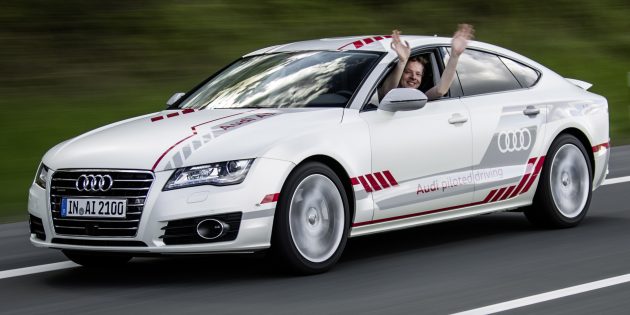





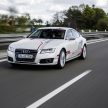
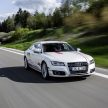
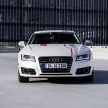
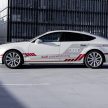


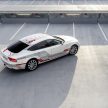
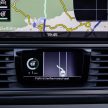
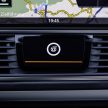
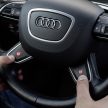
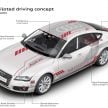
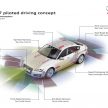
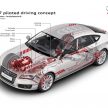
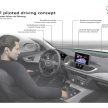
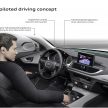























I guess even if the concept eventually becomes production, the feature wont be available here in malaysia because we have a lot of race car drivers zigzag’ing on the highways. Unless they programmed the car to dodge these race car drivers